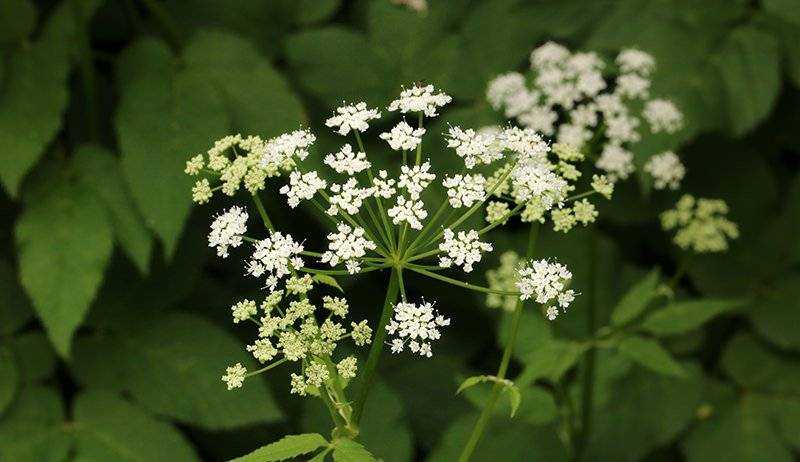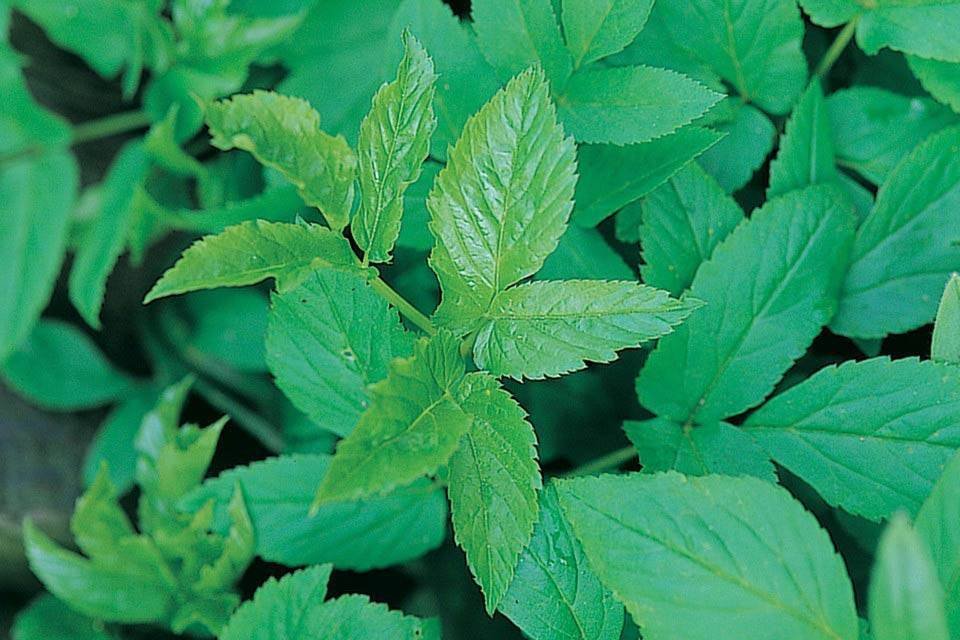Beautiful Plants For Your Interior

3 Ways of Eradicating Ground Elder
What does European Ground Elder look like? Before we can start eradicating ground elder (Aegopodium podagraria) effectively, this is a question we need to answer.
Quick Weed Facts:
Shape: Stalked With Several Flat Flower Heads
Colour: White
Family: Apiaceae (Carrot) Genus: Aegopodium podagraria
Main Species: Ground Elder (Aegopodium podagraria)
Other Names: Jump-About, Herb Gerard, Bishop’s Weed, Goutweed, Gout Wort, Snow-in-the-Mountain, English Masterwort and Wild Masterwort
Most Active Growing: Spring/Summer
Weed Type: Perennial
Ground Elder is a member of the Apiaceae family, which includes a variety of over 50 species of plants found in the UK, including Wild Carrot (Daucus carota) Cow Parsley (Anthriscus sylvestris), Wild angelica (Angelica sylvestris) and Garden parsley (Petroselinum Crispum) to name but a few.
Native to Europe, Ground Elder (Aegopodium podagraria) is a herbaceous perennial growing up to 1.5 metres tall. Leaflets are green, narrow and slender (sometimes variegated) and can be up to 7 cm (3in) long and once or possibly twice trifoliate; they are as mentioned ovate, hairless, toothed, unlobed, and growing with hollow grooved stems.
Ground Elder is without bracts or bracteoles, the compound umbels have between 10 and 20 white, five-petalled flowers in terminal positions. Ground Elder, also known as common ground elder, is found throughout Europe, Central Asia, and Southern England and spread to the US. Often found in gardens, verges, and waste ground, it readily establishes itself in moist-temperate climates. An aggressive invader, its invasive behaviour makes it an ecological threat, crowding out native species.

Eradicating Ground Elder: Leaves Are Narrow And Slender And Can Be Up To 7 cm (3in) Long, They Are Ovate And Toothed
How To Get Rid Of Ground Elder?
Because Ground Elder spreads through its aggressive rhizomes, it is easy for it to creep in from any neighbouring gardens or any nearby wasteland. In your new plants, check for pieces of its fleshy, white rhizomes which may be hidden in the compost of the ‘rootball’ or among the roots of the plant itself, which you may now be unknowingly introducing into your garden. Eradicating ground Elder is like bindweed, extremely difficult.
Removing Ground Elder – Organic Control
Removing ground elder with a non-chemical treatment (organically) is very very difficult but not impossible. The best non-chemical means is simply by a huge ‘mechanical’ effort.
Ground elder is an incredibly tough, persistent invasive plant. Any garden with signs of a ground elder infestation must be attended to immediately. The soil must be dug over repeatedly, using a ‘fork’ and or hoe and the ‘rhizomes’ removed and burnt.
This initial removal will not be rid of all the ‘roots and rhizomes’ after this ‘single’ digging session that is for sure.
Regular cutting of the foliage at ground level, with a hoe, is needed. This will weaken the plant over time, but you must perform this once every 7-10 days, or as soon as new growth appears. Alternatively, you can dig through the soil every 10-14 days and remove every piece of ground elder root you find.
Another method, after the initial dig, is to cover the area with ‘black polyethene’ to deprive the ground elder by starving it of light, before you can effectively eliminate it entirely. However, it may take several seasons to eliminate ground elder using this method.
To eliminate ground elder from a planted area is tricky and it may be necessary to dig out all the desirable plants clean off their roots and place them in pots. The cleared bed must then be cultivated repeatedly until ground elder has been eliminated (as above). It is critical that ground elder be removed before replanting.
Eradicating Ground Elder: A Professional View
Removing Ground Elder – Chemical Control
Apply a systemic ‘Glyphosate‘ weedkiller (e.g. Roundup Stump Killer, Doff Weedout Extra Tough Weedkiller or Westland Resolva Pro Xtra Tough Weedkiller) to the plant’s young leaves as soon as they emerge in the spring, this is a very important time for application and this spraying period should NOT be missed.
Re-apply the ‘herbicide’ every four to six weeks or as soon as new growth appears throughout the growing season or until the leaves start to turn dark green. There the ‘weed killer’ becomes increasingly ineffective.
Note: Because more of the ‘weed killer’ will be absorbed by the young foliage if you spray in the evening than if you spray during the day, spraying in the evening will be more effective.
FAQs
Is Ground Elder Harmful To Pets?
Ground Elder is not considered toxic to pets, but it can cause digestive issues if ingested in large quantities. Pets may also have an allergic reaction to the plant, which can cause skin irritation or other symptoms.
To prevent your pets from eating Ground Elder, it’s best to remove the plant from your garden or keep your pets away from areas where it grows.
Will Vinegar Kill Ground Elder?
Be sure to be very careful when using boiling water or white vinegar to kill weeds, as they may also kill any nearby plants. Soil composition and soil organisms like earthworms may also be affected, even soil acidity may be altered if ‘vinegar’ is poured or sprayed onto weeds.
It’s far better to use methods such as this for eliminating weeds in cracks in the pavements, patios, and similar areas. Not the Ground Elder (Aegopodium podagraria)
Killing Ground Elder In Lawns
Unfortunately, if Ground Elder is present in your lawn then your only surefire way of removal is using a strong ‘Glyphosate’ weedkiller as mentioned above. However, this will also kill the lawn. Digging up your lawn in part or whole and manual removal may be another option, but be sure all rhizomes are removed.
Conclusion
Eradicating Ground Elder (Aegopodium podagraria) is difficult don’t let’s be fooled. It is an aggressive, persistent, invasive plant that is VERY difficult to eliminate once it has established itself in your garden and the surrounding area.
Mechanical removal will help but can be long and laborious, chemical removal is usually the better option as explored above.
Don’t forget to visit our FAQ page for many more gardening tips, tricks and information on a whole host of subjects for the home and garden.
Return to UK Garden Weeds
